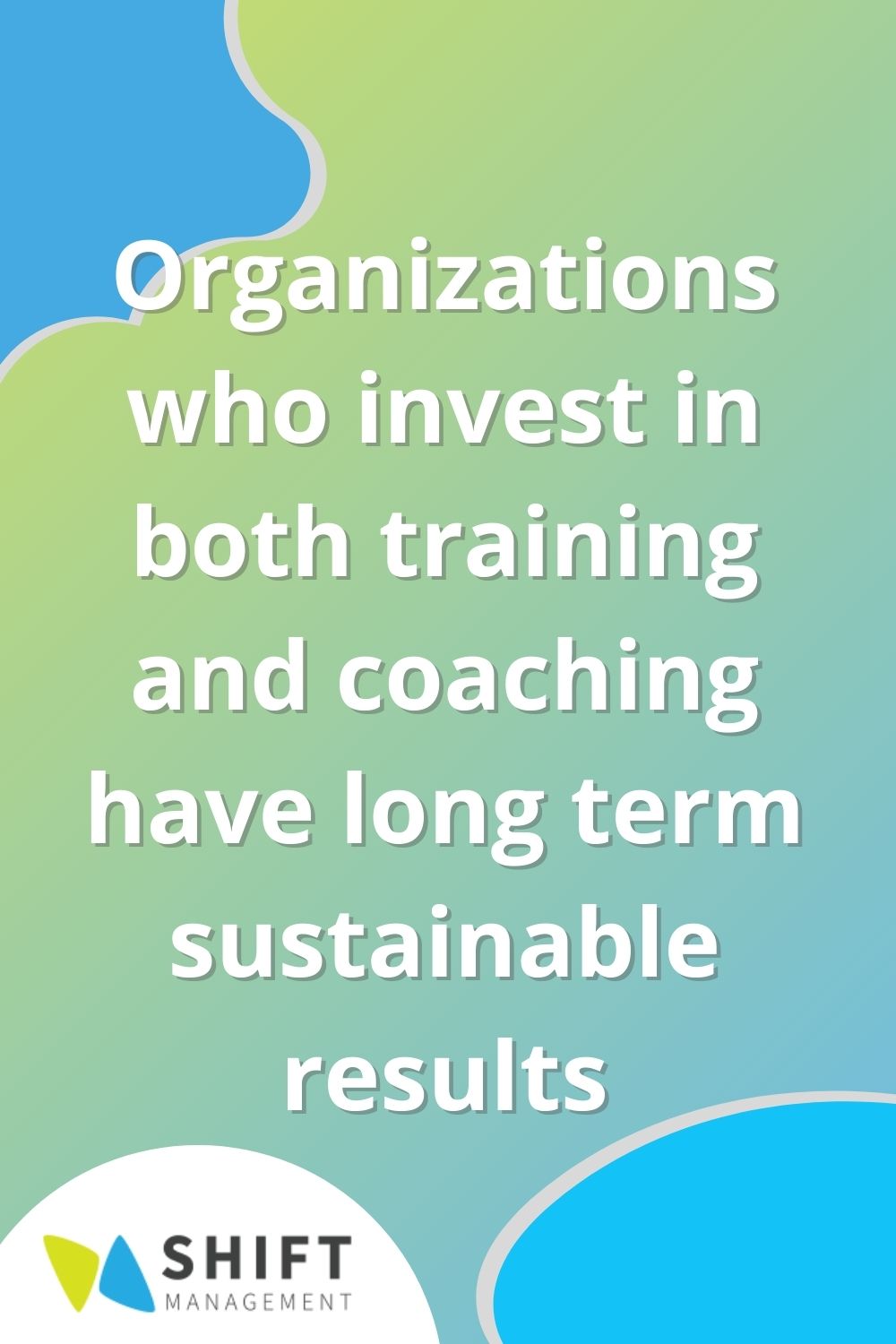There can be confusion between the terms training and coaching.
When an organization approaches me for training or coaching, there can be confusion between the terms training and coaching and what to expect for each. I thought it might be helpful to clarify how I see training and coaching and how I create the contexts for each, the types of training, and what kinds of outcomes are the result of training and coaching. I separate training into three categories depending on the goal.
Training goals are usually external to the individual and are based on the organization’s goals. Coaching, however, is a process applied to a variety of categories and may involve skill practice or not. Its success is dependent on a dialogue between the client and the coach along with practical coaching strategies to get to client goals more effectively. It is a combined effort of the goals of the client, the skills of the coach, and the client’s willingness to be open and coachable. Both training and coaching can be delivered virtually, in person or in a combination.

Training:
Training is typically a group format with information sent ahead of time and discussion sessions or skill-building sessions scheduled after that. Usually in training you want to see a change. Either you want a change in knowledge, skill improvement or attitude and this will be reflected in pre-identified behaviours.
1. Knowledge-based training:
If you want training for knowledge only, then the presentation of material with quizzes and some discussion is a typical format. The goal would be to see if people know what they should do and can speak about it. This is the kind of training most people are used to, but it frequently has disappointing immediate or long-term results because there is no change to behaviour as a result.
2. Skill-based training:
If you want training for skill development, you assume people have a skill base already, and then provide skill-building sessions, for example how to run an effective meeting, or how to conduct a one on one session with an employee. The goal would be to see specific changes to a procedure and skill through practice both in the training and outside (using employee surveys for example). This is targeted and results in improvement to clearly identified skills. Employees will be able to see the changes and the improvements are not difficult to measure. It is good for specific skills or a cluster of a type of skill development, but not that helpful for complex skills and applying skills to contexts.
3. Behaviour-change oriented training:
If you want training for change of knowledge, skill, and attitude, essentially you want to see a certain kind of behaviour cluster that can be applied to a variety of contexts. In this type of training, people develop higher self-awareness, other-awareness and ability to think more systematically. Participants use their pre-existing knowledge/experience and add on to what they know. Skill-building sessions are conducted in a group context (virtually or live) and then applied goal setting with reporting on goal progress is a requirement to apply the learning to specific jobs and individuals. The goal of this type of training is to see a combination of knowledge, skill and attitude change be first visible, then show up here and there as confidence is gained, and eventually become regular and sustained. It is measured through participant self-assessment, employee surveys, and application of goals to workplace contexts with observable outcomes.

Coaching:
Coaching is more complex and fluid than training. For professional development, coaching is like learning a sport or how to play an instrument. Managers and business owners usually need about 12 individual sessions to see real change. At about the 8-session benchmark there is often a significant shift in the individual’s perception, attitude and how that person relates to others. Materials and supports for coaching will vary from one person to the next and there is no set curriculum because it is based on individual work, career, interpersonal or business goals.
Coaching is for individual professional growth and does not have the same specific outcomes as training, but organizations often find that when they combine a training program with individual coaching, they see the best results. Share on X
One other consideration; there are group coaching programs, but they are typically a cross between training and individual coaching and oriented towards the entire group learning a specific set of skills such as for example learning to trade or to start a business.
As you can see, although they are related, there is a significant difference between training and coaching. With training, success depends on clarity of the goal and then the ability of the instructor and course to engage people in materials and discussions that feel relevant to them personally. In coaching it is the opposite process: success depends on the willingness of the client to work with and engage with the coach so the coach can provide what the client needs to reach his or her personal and professional goals.
Organizations who invest in both training and coaching have long term sustainable results – but only if they realize that the organization itself will need to be responsive and engage in change as the group of trainees starts to make changes to their behaviour.
People who read this article also read…
Workplace Politics: The Basics
Why people don’t follow procedures and what to do about it
Three Things Your Supervisors Are Doing Wrong And How To Fix Them
About Marie:
Marie Gervais, PhD., CEO of Shift Management Inc., provides managerial training and workforce interpersonal development to business and industry through online courses and web coaching. She helps individuals and organizations build talent and skills for leadership, communication, and conflict resolution particularly at the supervisory and middle management level. Her work has gained a reputation for excellence in integration and inclusion of the diverse workforce. With her team at Shift Management, Dr Gervais helps clients reach their business goals through team building coaching and industry-specific training development for interpersonal leadership skills. Her impactful digital and multi-media resources have been successfully implemented with many different populations and contexts. The results prove that a learning workplace is a happy and profitable one!
Check out Marie’s podcast Culture and Leadership Connections on Apple Podcasts and on the Shift website to hear stories of leadership and all things cultural. Consider the signature Supervisory Leadership Certificate Course for upskilling your workforce at:
https://shiftworkplace.com/courses/supervisory-leadership/
Contact information:
780 993 1062








